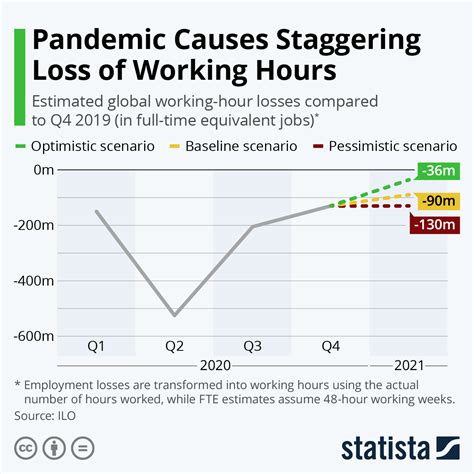
Hall of Famer Scottie Pippen suggests American companies prioritizing remote work may be overlooking the benefits of in-office collaboration, potentially contributing to recent job losses.
Scottie Pippen, the six-time NBA champion and Hall of Famer, has weighed in on the current state of the American job market, suggesting that the shift towards remote work policies may be contributing to a decline in productivity and, consequently, job losses. Pippen argues that the lack of in-person interaction and collaboration is hindering innovation and efficiency, leading companies to make difficult decisions about staffing. In a recent interview, Pippen expressed his concerns about the long-term effects of remote work on the American workforce, highlighting the importance of teamwork and mentorship, which he believes are more effectively fostered in a traditional office environment.
“I think a lot of Americans lost out on jobs because they want to work from home,” Pippen stated, emphasizing his belief that the demand for remote positions is impacting overall employment figures. His comments have sparked debate among economists, business leaders, and workers, prompting a reevaluation of the benefits and drawbacks of remote work in the post-pandemic era. While remote work offers flexibility and convenience for employees, Pippen suggests that companies may be missing out on the crucial advantages of in-person collaboration, such as spontaneous brainstorming sessions, immediate feedback, and stronger team cohesion.
Pippen’s perspective is rooted in his own experiences as a professional athlete, where teamwork, communication, and constant interaction were essential for success. He believes that these principles are equally applicable in the business world, and that the absence of these elements in remote work environments may be detrimental to overall productivity and innovation.
The rise of remote work has been a significant trend in recent years, accelerated by the COVID-19 pandemic. Many companies have embraced remote work policies as a way to attract and retain talent, reduce overhead costs, and improve employee morale. However, as the pandemic subsides and businesses return to a more normal operating environment, there is growing debate about the optimal balance between remote work and in-office presence.
Pippen’s comments add a new dimension to this debate, highlighting the potential downsides of remote work that may not be immediately apparent. While many studies have shown that remote workers can be just as productive, if not more so, than their in-office counterparts, Pippen suggests that these studies may not capture the full picture. He argues that the intangible benefits of in-person collaboration, such as the development of strong working relationships and the fostering of a sense of camaraderie, are difficult to quantify but nonetheless important for long-term success.
One of the key arguments against remote work is the potential for decreased communication and collaboration. While technology has made it easier than ever to communicate with colleagues remotely, it is not always a substitute for face-to-face interaction. In-person meetings and brainstorming sessions can often lead to more creative and innovative solutions than virtual meetings, as they allow for more spontaneous and fluid exchanges of ideas. Additionally, in-office environments can provide opportunities for informal mentorship and knowledge sharing, which can be particularly valuable for younger or less experienced employees.
Another concern about remote work is the potential for social isolation and burnout. While remote work can offer greater flexibility and control over one’s work schedule, it can also lead to feelings of loneliness and detachment from colleagues. Without the social interactions of the office, remote workers may feel isolated and disconnected, which can negatively impact their mental health and well-being. Additionally, the blurring of lines between work and personal life can lead to burnout, as remote workers may feel pressure to be constantly available and responsive to work demands.
Pippen’s comments come at a time when the American job market is facing a number of challenges, including rising inflation, supply chain disruptions, and labor shortages. While the unemployment rate remains relatively low, there are concerns that the economy may be slowing down, and that job losses could increase in the coming months. In this context, it is important to consider all factors that may be contributing to job losses, including the impact of remote work policies.
While remote work may offer certain advantages, it is important to weigh these advantages against the potential downsides. Companies should carefully consider the impact of remote work policies on productivity, innovation, and employee well-being, and should be prepared to make adjustments as needed. Additionally, employees should be aware of the potential challenges of remote work and should take steps to mitigate these challenges, such as staying connected with colleagues, setting boundaries between work and personal life, and seeking support when needed.
The debate over remote work is likely to continue for the foreseeable future, as companies and employees grapple with the new realities of the post-pandemic world. There is no one-size-fits-all solution, and the optimal balance between remote work and in-office presence will likely vary depending on the industry, company culture, and individual preferences. However, by considering all perspectives and weighing the potential advantages and disadvantages, companies and employees can make informed decisions that are in their best interests.
Pippen’s remarks have fueled a broader conversation about the future of work and the importance of adapting to evolving workplace dynamics. While his perspective is based on his personal experiences, it raises important questions about the potential trade-offs between flexibility and collaboration, and the need for companies to carefully evaluate their remote work policies to ensure they are not inadvertently hindering productivity and innovation. The key, according to many experts, is to find a hybrid approach that combines the benefits of both remote and in-office work, allowing employees to enjoy flexibility while maintaining the crucial elements of teamwork and collaboration.
The former Chicago Bulls star’s viewpoint underscores the multifaceted nature of the current employment landscape, where technological advancements, changing employee expectations, and economic pressures are reshaping the way we work. As businesses navigate these complex challenges, it is essential to consider a wide range of perspectives, including those of athletes like Pippen, who have a unique understanding of the importance of teamwork and collaboration in achieving success.
Moreover, Pippen’s statement calls for a deeper investigation into the metrics used to assess productivity in remote work settings. While traditional measures like output and project completion are important, they may not fully capture the impact of reduced informal communication and spontaneous problem-solving that often occur in physical workspaces. Companies need to develop more holistic evaluation methods that account for these less tangible but equally valuable aspects of collaboration.
The discussion also brings to light the role of leadership in fostering a cohesive and productive work environment, regardless of location. Effective leaders must be able to adapt their communication styles, build trust among team members, and create opportunities for meaningful interaction, whether employees are working remotely or in the office. Investing in leadership training and development programs can help organizations cultivate the skills needed to manage remote teams effectively and mitigate the potential negative impacts of remote work on productivity and employee morale.
Ultimately, the future of work will depend on the ability of companies and employees to embrace flexibility, adaptability, and a willingness to experiment with new approaches. By carefully considering the potential benefits and drawbacks of different work models and investing in the tools and resources needed to support effective collaboration, organizations can create thriving workplaces that attract and retain top talent and drive long-term success. Pippen’s comments serve as a reminder that while remote work offers many advantages, it is not a panacea, and that careful consideration must be given to the potential impact on productivity, innovation, and employee well-being.
Expanding on the nuances:
The core of Pippen’s statement lies in the perceived trade-off between individual flexibility and collective productivity. While remote work undeniably offers employees greater autonomy over their schedules and work environments, it simultaneously diminishes opportunities for spontaneous interaction, informal mentorship, and the kind of synergistic problem-solving that often arises from in-person collaboration. This raises a critical question: Can the benefits of remote work be fully realized without sacrificing the crucial elements of teamwork and mentorship that are traditionally associated with physical workspaces?
Economists and business analysts have offered varying perspectives on this issue. Some argue that the increased flexibility and autonomy afforded by remote work can lead to higher employee satisfaction and, consequently, increased productivity. They point to studies that have shown remote workers to be just as productive, if not more so, than their in-office counterparts. These studies often emphasize the importance of providing remote workers with the right tools, technologies, and support systems to enable them to work effectively from home.
However, other experts caution against oversimplifying the issue. They argue that the impact of remote work on productivity and innovation can vary significantly depending on the industry, company culture, and individual employee characteristics. For example, highly collaborative industries that rely heavily on teamwork and spontaneous brainstorming may be more negatively impacted by remote work than industries that involve more independent work. Similarly, employees who are self-motivated, organized, and technologically savvy may be better suited for remote work than employees who require more supervision and guidance.
Moreover, the long-term effects of remote work on innovation and creativity are still largely unknown. While remote work may enable employees to work more efficiently on routine tasks, it may also stifle the kind of serendipitous discoveries and breakthroughs that often arise from informal interactions and chance encounters in the workplace. The absence of water cooler conversations, impromptu meetings, and informal mentorship opportunities may limit the cross-pollination of ideas and the development of new skills, potentially hindering long-term innovation.
To address these concerns, many companies are experimenting with hybrid work models that combine the benefits of both remote and in-office work. These models typically involve allowing employees to work remotely for a certain number of days per week or month, while also requiring them to come into the office for team meetings, collaborative projects, and social events. The goal is to provide employees with the flexibility they desire while also preserving the crucial elements of teamwork, mentorship, and in-person collaboration.
However, implementing a successful hybrid work model requires careful planning and execution. Companies need to develop clear guidelines for remote work, invest in the technologies and resources needed to support remote collaboration, and train managers on how to effectively manage remote teams. They also need to create opportunities for remote and in-office employees to connect and interact with each other, fostering a sense of community and shared purpose.
In addition to addressing the challenges of remote work, companies also need to focus on creating a positive and inclusive work environment for all employees, regardless of their location. This includes ensuring that remote workers have equal access to opportunities for professional development, recognition, and advancement, and that they are not excluded from important decisions or social events. It also means addressing potential biases and stereotypes that may arise from the perception that remote workers are less committed or less productive than their in-office counterparts.
Ultimately, the future of work will depend on the ability of companies and employees to embrace flexibility, adaptability, and a willingness to experiment with new approaches. By carefully considering the potential benefits and drawbacks of different work models and investing in the tools and resources needed to support effective collaboration, organizations can create thriving workplaces that attract and retain top talent and drive long-term success.
The Technological Aspect and Infrastructure:
Pippen’s observation indirectly highlights the uneven distribution of technological infrastructure across the United States. The feasibility of remote work is heavily reliant on access to reliable high-speed internet, which is not universally available. Rural areas and low-income communities often face significant barriers to accessing broadband, effectively excluding residents from participating in remote work opportunities. This disparity exacerbates existing inequalities and contributes to a digital divide that further disadvantages already marginalized populations.
Moreover, even in areas with adequate internet access, the quality and reliability of service can vary significantly. Frequent outages, slow speeds, and data caps can disrupt remote work and negatively impact productivity. Companies that encourage or require remote work must consider the technological realities faced by their employees and provide support to ensure that everyone has access to the resources they need to work effectively. This may include offering stipends for internet service, providing technical assistance, or establishing satellite offices in areas with limited connectivity.
Furthermore, the increasing reliance on technology for remote work raises concerns about cybersecurity and data privacy. Remote workers often use their personal devices and home networks to access company data, which can create vulnerabilities to cyberattacks. Companies need to implement robust security protocols to protect sensitive information, including providing employees with secure VPN connections, requiring strong passwords, and conducting regular security audits.
In addition to technological infrastructure, the success of remote work also depends on the availability of appropriate physical workspaces. Not all homes are conducive to remote work, and many employees may lack a dedicated office space or a quiet environment free from distractions. This can be particularly challenging for employees with young children or other caregiving responsibilities. Companies can support remote workers by offering stipends for home office equipment, providing access to coworking spaces, or establishing on-site childcare facilities.
The Broader Economic Context:
Pippen’s remarks about job losses related to remote work need to be viewed within the broader context of the American economy. While remote work may be a contributing factor, it is just one piece of a complex puzzle. Other factors that are impacting the job market include rising inflation, supply chain disruptions, labor shortages, and technological advancements.
The COVID-19 pandemic triggered a significant shift in consumer spending patterns, as people reduced their spending on services and increased their spending on goods. This surge in demand for goods, coupled with disruptions to global supply chains, led to rising inflation. As prices continue to rise, consumers are becoming more cautious about their spending, which could lead to a slowdown in economic growth and job losses.
Labor shortages are also a major challenge for many businesses. The pandemic led to a significant decline in labor force participation, as many people left the workforce due to health concerns, childcare responsibilities, or early retirement. This shortage of workers has made it difficult for companies to fill open positions, which has further contributed to supply chain disruptions and inflation.
Technological advancements are also transforming the American job market. Automation, artificial intelligence, and other technologies are displacing workers in some industries while creating new opportunities in others. Companies need to invest in training and education programs to help workers adapt to these changes and acquire the skills needed for the jobs of the future.
In this complex economic environment, it is important to avoid simplistic explanations for job losses. While remote work may be a contributing factor, it is just one of many forces that are shaping the American job market. Companies and policymakers need to take a holistic approach to addressing these challenges, focusing on policies that promote economic growth, create jobs, and support workers.
The Importance of Mentorship and Team Dynamics:
Pippen’s emphasis on the importance of teamwork and mentorship is particularly relevant in the context of remote work. While technology can facilitate communication and collaboration, it cannot fully replicate the spontaneous interactions and informal learning opportunities that occur in a physical workplace. Mentorship, in particular, often relies on close proximity and frequent interaction, which can be difficult to achieve in a remote environment.
Mentorship plays a crucial role in professional development, providing guidance, support, and networking opportunities for younger or less experienced employees. Mentors can help mentees navigate the challenges of the workplace, develop their skills, and advance their careers. In a remote environment, it is essential to create intentional opportunities for mentorship, such as virtual coffee chats, online mentoring programs, and regular check-ins.
Team dynamics are also critical for success in any workplace, but they can be particularly challenging to maintain in a remote environment. Building trust, fostering communication, and resolving conflicts can be more difficult when team members are not physically present. Companies need to invest in team-building activities, communication training, and conflict resolution strategies to ensure that remote teams are able to function effectively.
Furthermore, leadership plays a critical role in shaping team dynamics and fostering a positive work environment, regardless of location. Effective leaders must be able to adapt their communication styles, build trust among team members, and create opportunities for meaningful interaction, whether employees are working remotely or in the office. Investing in leadership training and development programs can help organizations cultivate the skills needed to manage remote teams effectively and mitigate the potential negative impacts of remote work on productivity and employee morale.
FAQ:
-
What is Scottie Pippen’s main argument regarding remote work and job losses?
- Scottie Pippen believes that the widespread adoption of remote work policies by American companies may be contributing to job losses because it hinders in-person collaboration, teamwork, and mentorship, which are essential for productivity and innovation. He suggests companies are “missing out” on the benefits of in-office interactions.
-
What are some of the benefits of in-person collaboration that Pippen believes are being lost in remote work environments?
- Pippen emphasizes the importance of spontaneous brainstorming sessions, immediate feedback, the development of strong working relationships, and the fostering of a sense of camaraderie, all of which are more easily facilitated in a traditional office setting.
-
How has the COVID-19 pandemic influenced the trend of remote work, and what challenges has it presented?
- The COVID-19 pandemic accelerated the trend of remote work, leading many companies to adopt remote work policies to attract and retain talent and reduce overhead costs. However, it has also presented challenges such as decreased communication, potential social isolation, burnout among remote workers, and difficulties in maintaining team cohesion.
-
What are some strategies companies can implement to mitigate the potential negative impacts of remote work, as suggested by the article?
- Companies can experiment with hybrid work models that combine remote and in-office work, provide remote workers with the necessary tools and support systems, invest in leadership training to manage remote teams effectively, create opportunities for remote and in-office employees to connect, and ensure that remote workers have equal access to professional development and advancement opportunities.
-
Beyond remote work, what other economic factors are influencing the American job market, according to the article?
- The article notes that other economic factors influencing the American job market include rising inflation, supply chain disruptions, labor shortages, and technological advancements like automation and artificial intelligence. These factors, alongside remote work, contribute to the complex dynamics affecting job creation and losses.
Concluding Thoughts:
Scottie Pippen’s perspective on remote work, while originating from his experience in professional sports, raises valid concerns about the potential downsides of a fully remote workforce. While flexibility and autonomy are valuable, the loss of spontaneous collaboration, mentorship, and strong team dynamics could indeed impact productivity and innovation. It highlights the necessity for companies to thoughtfully evaluate their remote work policies, ensuring they strike a balance that fosters both individual well-being and collective success. The future of work likely lies in a hybrid approach, carefully designed to leverage the benefits of both remote and in-person interactions. The ongoing debate underscores the need for continuous adaptation and a willingness to prioritize both employee needs and organizational goals in a rapidly evolving economic landscape.









